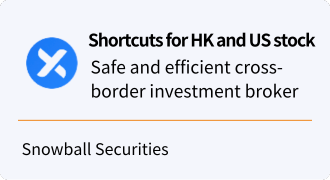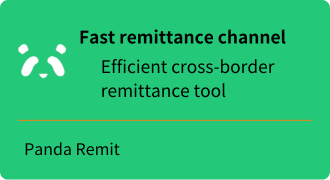A2-Value Investing Tools: Professional Enterprise Valuation Methods
[DISCLAIMER] This article is for educational and informational purposes only and does not constitute investment advice. Readers should consult with qualified financial professionals before making any investment decisions.
Are you missing investment opportunities because you can't accurately determine if stocks are undervalued? As a quantitative trading practitioner with over 10 years of hands-on experience and extensive real-world case studies, I'll provide you with an in-depth analysis of professional enterprise intrinsic value assessment methods to help you master the most practical value investing tools. I'm Uncle Haowai , a practitioner who has been deeply involved in quantitative trading and value investing for many years. Today, I'll share this complete enterprise valuation system with you.
I. Cognitive Restructuring: Why Traditional Valuation Thinking Makes You Poorer
1.1 Analysis of Traditional Investment Misconceptions
Most retail investors fall into three fatal traps when conducting enterprise valuations.
The first misconception is relying solely on Price-to-Earnings (PE) ratios for valuation judgments. In my investment practice, I've discovered that investors who only look at PE ratios often misjudge cyclical industry stocks as cheap during peak periods and expensive during troughs. For example, after China's supply-side reform in 2021, the steel industry's PE ratio once dropped below 5x, but this was precisely the industry's profit peak period. The subsequent earnings decline turned this "cheap" valuation into a trap.
The second misconception is ignoring the importance of cash flow while focusing excessively on book profits. Through years of quantitative analysis, I've found that companies with significant differences between book profits and free cash flow often hide substantial financial risks. For instance, some rapidly expanding retail enterprises may show attractive profit statements, but their operating cash flows remain consistently negative. In such cases, traditional earnings multiple valuations become completely ineffective.
The third misconception is lacking quantified thinking about margin of safety. Many investors understand the concept of margin of safety but don't know how to calculate it precisely. Warren Buffett once said that investing is like driving across a bridge – you need to ensure the bridge can support 40,000 tons even if your car weighs only 10,000 tons. This metaphor precisely explains the essence of margin of safety, but quantifying this "load-bearing capacity" in actual investments requires professional valuation tools and methods.
1.2 Root Cause Analysis of Cognitive Biases
The fundamental reason for these misconceptions lies in the lack of a systematic enterprise value assessment framework. Traditional investment education overemphasizes technical analysis and emotional management while lacking in-depth coverage of fundamental analysis's core – enterprise intrinsic value calculation. This is like learning to drive by only teaching you to look in the rearview mirror without teaching you to look at the road ahead.
Behavioral finance research shows that humans tend to seek simple heuristic rules when facing complex data, such as "low PE equals cheap." However, in modern market environments, this simplified thinking often leads to systematic errors. True value investing must be built on a solid foundation of enterprise value assessment, which is exactly the core problem this article aims to solve.
II. The True Core of DCF Models: Complete Construction from Theory to Practice
2.1 Core Principles and Advantages of DCF Models
The Discounted Cash Flow (DCF) model is hailed as the "crown jewel" of enterprise valuation. Its core idea is: an enterprise's intrinsic value equals the present value sum of all its future free cash flows. This concept sounds abstract, but it's easy to understand with a relatable analogy: suppose you want to buy a vending machine that can earn you $10,000 net profit annually, with zero residual value after 10 years of use. At an 8% cost of capital, what's the maximum you'd be willing to pay for this machine?
This is the essential thinking behind DCF models. By precisely calculating the present value of an enterprise's future cash flows, we can derive the enterprise's theoretical value, then compare it with current market prices to judge investment opportunities.
Compared to other valuation methods, DCF models have three significant advantages. First, they have the most solid theoretical foundation, based on modern finance's core principle – the time value of money. Second, they have the broadest applicability, suitable for valuing growth stocks, value stocks, and cyclical stocks alike. Finally, they produce the most objective results because they don't rely on market sentiment or peer comparisons, but rather on the enterprise's own cash flow generation capacity.
2.2 Five-Step DCF Model Construction Method
Based on my experience summarized through investment practice, DCF model construction can be divided into five core steps:
- Step one is historical cash flow analysis. This requires collecting 5-10 years of enterprise data including operating cash flows, capital expenditures, and working capital changes, analyzing cash flow stability and growth trends. Focus particularly on the quality and sustainability of free cash flow (operating cash flow minus capital expenditures).
- Step two is revenue growth forecasting. This is the most critical and difficult aspect of DCF modeling. It requires comprehensive consideration of industry growth trends, enterprise competitive advantages, and market share changes. I recommend using multi-scenario analysis, setting optimistic, neutral, and pessimistic scenarios with different probability weights assigned to each.
- Step three is profit margin analysis and forecasting. Through analyzing historical trends in gross margins, operating margins, and net margins, combined with industry competitive landscape and enterprise moat depth, forecast future profitability changes.
- Step four is capital expenditure and working capital forecasting. Capital expenditures directly affect free cash flow calculations and require distinguishing between maintenance capex and growth capex. Working capital changes reflect changes in enterprise operational efficiency.
- Step five is discount rate determination. Typically using Weighted Average Cost of Capital (WACC) as the discount rate requires accurate calculation of enterprise equity costs and debt costs. For higher-risk enterprises, appropriate risk premiums must be added.
III. Industry Valuation Differences: Professional Comparative Analysis of 15 Major Industries
3.1 Technology vs. Traditional Manufacturing Valuation Differences
Technology and traditional manufacturing industries show significant differences in valuation methods, stemming from completely different business model characteristics. Technology enterprises typically feature light assets, high growth, and high gross margins, but also relatively higher profit uncertainty.
For technology enterprises, I recommend using modified DCF models focusing on several key indicators: first, user growth rates and Average Revenue Per User (ARPU), which directly determine sustainable revenue growth capacity. Second, R&D investment ratios, as technology enterprises' competitive moats mainly come from technological advantages requiring continuous R&D investment to maintain competitive positions. Finally, cash conversion cycles, as technology enterprises' working capital management efficiency often significantly exceeds traditional enterprises.
Based on my five-year tracking research of technology stocks, technology enterprises' DCF model forecast periods typically need extension to 10-15 years because their value is more reflected in long-term cash flow contributions. Additionally, due to technology iteration risks, I recommend adding 2-3% technology risk premiums to discount rates.
Traditional manufacturing presents completely different characteristics. These enterprises typically have heavier assets, relatively stable cash flows, but limited growth potential. For manufacturing enterprises, DCF model keys lie in accurately assessing maintenance capital expenditure requirements and capacity utilization rate changes.
3.2 Special Valuation Methods for Financial Industries
Due to their special business models, traditional DCF models aren't entirely applicable to financial industries. Banks, insurance companies, and securities firms have financial assets rather than physical assets as core assets, with value creation mechanisms completely different from real economy enterprises.
For banking, I recommend using Dividend Discount Models (DDM) combined with Return on Equity (ROE) decomposition methods. Banks' intrinsic value mainly depends on their ROE sustainability and capital adequacy ratios. Specifically, focus on analyzing Net Interest Margin (NIM) stability, asset quality change trends, and capital supplementation requirements.
According to Chinese banking industry statistics over the past 10 years, joint-stock banks' average ROE is approximately 12.5%, city commercial banks about 11.8%, and state-owned major banks about 13.2%. In the current interest rate downward cycle, banking industry NIMs are under universal pressure, directly affecting their valuation levels.
Insurance industry valuation requires using Embedded Value (EV) methods. Embedded value includes adjusted net asset value and value of in-force business, providing more accurate reflection of insurance companies' true value. Particularly for life insurance companies, their value largely reflects future profit contributions from existing policies, which is precisely the advantage of embedded value models.
3.3 Cyclical Industry Valuation Challenges and Solutions
Cyclical industry valuation is one of the most challenging areas because these enterprises' profitability fluctuates dramatically with economic cycles and commodity price cycles. Steel, coal, chemicals, and building materials all belong to typical cyclical industries.
For cyclical enterprises, using current earnings data for valuation alone often yields misleading conclusions. I recommend adopting "cycle-adjusted valuation methods" including the following steps:
First, analyze the historical cycle length and volatility amplitude of the enterprise's industry. Taking steel as an example, based on 20 years of data, the steel industry's complete cycle is approximately 7-10 years, with upward and downward periods each occupying half the time.
Second, calculate the enterprise's average profitability over complete cycles. This requires excluding extreme year data, using medians or weighted averages to smooth cyclical fluctuations.
Finally, conduct valuations based on cycle median profitability levels while applying appropriate cyclical discounts. Due to cyclical enterprises' higher earnings uncertainty, their valuation multiples should typically be lower than stable growth enterprises.
IV. Excel Valuation Template Practical Guide: Step-by-Step Professional Model Construction
4.1 Excel Template Architecture Design and Data Input
A professional Excel valuation template should contain six core worksheets: historical data sheet, assumption parameters sheet, income forecast sheet, cash flow forecast sheet, valuation calculation sheet, and sensitivity analysis sheet. This modular design not only facilitates data management but also aids in model auditing and modification.
The historical data sheet is the foundation of the entire model, requiring collection of at least 5 years of complete enterprise financial data. Key items include operating revenue, operating costs, selling expenses, administrative expenses, financial expenses, operating cash flows, capital expenditures, total assets, and shareholders' equity. Data sources should prioritize enterprise annual reports to ensure data accuracy and consistency.
The assumption parameters sheet is the model's control center where all forecasting assumptions should be centrally configured. Main parameters include: revenue growth rates (set annually), gross margin change trends, period expense ratios, tax rates, capital expenditure as percentage of revenue, working capital change rates, terminal growth rates, and discount rates. This centralized management approach facilitates sensitivity analysis and scenario testing.
During data input phases, several key techniques need mastering. First, use data validation functions to limit input ranges and avoid input errors. Second, establish data cross-reference relationship checks to ensure balance sheet equilibrium. Finally, set conditional formatting to automatically highlight abnormal data in red.
4.2 Core Formula Construction and Calculation Logic
The DCF model's core lies in the free cash flow calculation formula: Free Cash Flow = Net Income + Depreciation & Amortization - Capital Expenditures - Working Capital Increases. In Excel, this formula needs annual construction while considering tax adjustment impacts.
Specific Excel formula construction follows:
First, construct revenue forecast formulas. Assuming column A contains years, column B contains base period revenue, and column C contains growth rates, future year revenue formulas would be: =B2*(1+C2), then drag down to copy.
Next, construct profit forecasts. Gross Profit = Revenue × Gross Margin, Operating Profit = Gross Profit - Period Expenses, Net Income = Operating Profit × (1-Tax Rate). Each segment should use relative references to facilitate formula copying.
Free cash flow calculation is the key segment. Assuming net income in column D, depreciation in column E, capital expenditures in column F, and working capital changes in column G, the free cash flow formula would be: =D2+E2-F2-G2.
Enterprise value calculation requires using NPV functions: =NPV(discount rate, cash flow range)+terminal value present value. Terminal value calculation formula: Terminal year free cash flow × (1+perpetual growth rate)/(discount rate-perpetual growth rate).
To enhance model professionalism, recommend adding the following advanced features: use CHOOSE functions for scenario switching, use GOAL SEEK functions for target solving, and use pivot tables for sensitivity analysis summaries.
V. Common Pitfalls: Why Valuation Errors Make You Step into Traps
5.1 Three Major Typical Error Analysis
In my years of investment consulting experience, investors' most common errors when using DCF models mainly concentrate in three areas.
The first error is overly optimistic growth expectations. Many investors, when conducting revenue forecasts, are often misled by enterprises' short-term high growth, erroneously extrapolating short-term growth rates linearly to long-term periods. Taking a new energy vehicle enterprise as an example, 2020-2021 revenue growth exceeded 100%, but many investors predicted it could maintain 50%+ growth for the next 10 years, which is clearly unrealistic. According to business laws, any enterprise's growth rate gradually slows as scale expands, known as the "law of large numbers."
The second error is ignoring working capital impacts. Many investors, when calculating free cash flows, only consider net income and capital expenditures while ignoring working capital changes. Particularly for rapidly growing enterprises, working capital increases often significantly erode free cash flows. For example, a retail chain enterprise showed rapid net income growth, but due to substantial increases in inventory and accounts receivable, actual free cash flow growth was far below net income growth.
The third error is improper discount rate settings. Minor discount rate changes can have enormous impacts on valuation results, but many investors lack sufficient attention to this. Common errors include: using fixed discount rates without considering enterprise risk changes, confusing equity costs with debt costs, and ignoring small enterprise liquidity risks.
5.2 Correct Practice Guidance and Risk Control
The key to avoiding these errors lies in establishing scientific forecasting frameworks and strict verification mechanisms.
For growth rate forecasting, I recommend using "declining growth models" – assuming enterprise growth rates decline by certain amounts annually until reaching industry average or GDP growth levels. Specific decline amounts can reference enterprises' historical growth trajectories and peer enterprise growth curves.
For working capital forecasting, recommend forecasting by working capital components separately. Accounts receivable can be forecast using Revenue × Accounts Receivable Turnover Days, inventory using Cost of Goods Sold × Inventory Turnover Days, and accounts payable using Cost of Goods Sold × Accounts Payable Turnover Days. This segmented forecasting method's accuracy far exceeds simple proportional calculations.
For discount rate determination, recommend using CAPM models for equity cost calculations: Equity Cost = Risk-free Rate + Beta × Market Risk Premium + Specific Risk Premium. Beta coefficients can be obtained from professional financial websites, market risk premiums typically range 5-7%, and specific risk premiums need adjustment based on enterprise size, liquidity, and financial leverage factors.
VI. Margin of Safety Quantitative Calculation: Systematic Methods from Concept to Practice
6.1 Mathematical Model Construction for Margin of Safety
Margin of safety is value investing's core concept, but how to precisely quantify it has always been a puzzle troubling investors. In my investment practice, I've developed a systematic margin of safety calculation method.
The mathematical expression for margin of safety is: Margin of Safety = (Intrinsic Value - Market Price) / Market Price × 100%. However, this formula's key lies in determining reasonable intrinsic value ranges, as DCF model results are extremely sensitive to assumption conditions.
To solve this problem, I recommend using Monte Carlo simulation methods for probability distribution valuations. The specific approach involves: setting key assumption parameters in DCF models (such as growth rates, profit margins, discount rates) as probability distributions rather than fixed values, then conducting thousands of calculations through random sampling to derive intrinsic value probability distributions.
Taking a consumer goods enterprise as an example, assume its revenue growth rate follows a normal distribution with mean 10% and standard deviation 3%, gross margin follows a normal distribution with mean 35% and standard deviation 2%, and discount rate follows a normal distribution with mean 9% and standard deviation 1%. Through 10,000 Monte Carlo simulations, complete probability distributions of the enterprise's intrinsic value can be obtained.
6.2 Dynamic Margin of Safety Management Strategies
Traditional margin of safety concepts are static, but in actual investment, both enterprise intrinsic values and market prices constantly change, requiring establishment of dynamic margin of safety management strategies.
I recommend establishing three-tier margin of safety standards: 20% minimum margin of safety for high-quality blue chips, 30% standard margin of safety for general growth stocks, and 50% high margin of safety for cyclical stocks or higher-risk enterprises. These standards need adjustment based on market environments and personal risk preferences.
In bull market environments, due to overall market overvaluation, margin of safety requirements can be appropriately lowered; in bear markets, margin of safety requirements should be raised to address greater uncertainty. Additionally, regular revaluation mechanisms should be established, recalculating margin of safety at least quarterly and adjusting investment portfolios timely.
Another important aspect of dynamic margin of safety management is position management. When margin of safety is high, positions can be appropriately increased; when margin of safety narrows, consider reducing positions or taking profits. This dynamic adjustment strategy can effectively control investment risks and improve long-term return stability.
VII. From Theory to Practice: Progressive Pathways for Value Investment Valuation
7.1 Three-Stage Advancement Plan for Beginners
For investors just starting to learn enterprise valuation, I recommend a three-stage progressive learning path.
Stage one is the basic tools mastery period (1-3 months). Focus on learning financial statement analysis and basic valuation multiple methods. Recommend starting with simple indicators like PE, PB, PEG, mastering basic methods of peer industry comparisons. This stage's goal is establishing basic valuation concepts and learning to identify obviously overvalued or undervalued enterprises.
Stage two is the DCF model practice period (3-6 months). Begin learning DCF model construction and usage, focusing on mastering cash flow forecasting and discount rate calculations. Recommend selecting 3-5 enterprises from different industries for complete DCF valuation exercises, deepening model understanding through practice. This stage's goal is being able to independently complete basic DCF valuations.
Stage three is the advanced skills enhancement period (6-12 months). Learn industry-specific valuation methods, Monte Carlo simulations, sensitivity analysis, and other advanced skills. Focus on improving understanding capabilities for different business models and risk assessment abilities. This stage's goal is establishing complete valuation analysis frameworks capable of handling complex valuation challenges.
7.2 Practical Tools and Resource Recommendations
To do good work, one must first sharpen one's tools. Professional valuation analysis requires appropriate tools and data resources.
For data acquisition, recommend using several channels: enterprise annual and quarterly reports are the most authoritative data sources, obtainable from stock exchange websites or enterprise official websites. Financial data service providers like Wind, Bloomberg, and Oriental Fortune offer more convenient data query functions but require payment. Free data sources include Xueqiu, Tonghuashun, and Tencent Finance, with data quality basically meeting individual investor needs.
For analysis tools, Excel remains the most practical choice, with almost all valuation models constructible in Excel. For more complex analysis needs, consider using Python or R programming languages for analysis. Professional valuation software like FactSet and Capital IQ offer powerful functions but high costs, suitable for institutional investors.
For learning resources, recommend several classic valuation books: "Valuation" (by McKinsey & Company) provides complete enterprise valuation theoretical frameworks; "Security Analysis" (by Graham) is the foundational work of value investing; "Financial Modeling" (by Rosenbaum) details DCF model construction methods. These books combined with practical exercises can help investors rapidly improve valuation skills.
Conclusion
Enterprise intrinsic value assessment is value investing's core skill and an important tool for maintaining rationality amid market volatility. Through systematically mastering DCF models, industry-specific valuation methods, margin of safety calculations, and other professional skills, investors can more accurately identify investment opportunities and avoid emotional decision-making traps.
Remember, valuation is a combination of art and science requiring continuous refinement and improvement through practice. Recommend starting practice with simple cases, gradually increasing complexity while maintaining open learning attitudes and continuously following developments and innovations in valuation methods.
What challenges have you encountered in enterprise valuation? Welcome to share your experiences and questions in the comments section, so we can explore the essence of value investing together.
About Uncle Haowai : Focused on interpreting investment wisdom through data and logic, helping investors establish scientific investment decision-making systems. With over 10 years of quantitative trading experience and deep cultivation in value investing, committed to transforming complex financial theories into practical investment tools. Follow Uncle Haowai for more investment insights and practical techniques.







